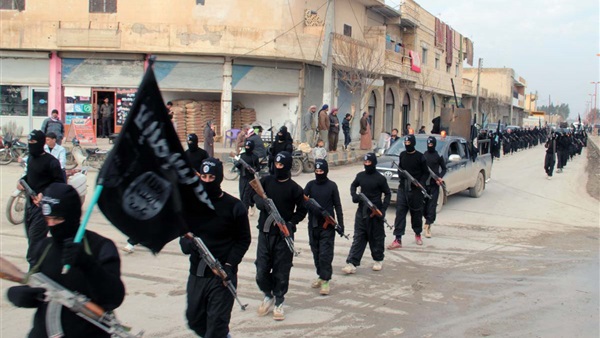Different scenarios: The future of ISIS in the Middle East

The US
general’s warning should raise several questions on the future of ISIS after
its defeat in Mosul. Inquiries are also there about the post-ISIS scenarios; and
how the future of terrorist groups, such as Ansar Beitul Makdes in Egypt and
Boko Haram in Nigeria, would unfold. Both Ansar Beitul-Makdes and Boko Haram had
declared allegiance to the Islamic state. It is also evidenced strongly that
after its defeat in Mosul, ISIS has developed new fight strategy. The following points could help view scenarios
ISIS will have to carry to draw up its future:
First- Future of ISIS fighters
After its defeat in the Iraqi city
of Mosul, ISIS fighters withdrew to Syria and reorganized themselves in Raqqa. The Islamic
state was said to have been on the brink of collapse, a precarious situation,
which prompted calls to shift allegiance from individuals to commitment to fighting
to the end. ISIS was, therefore, said to have plunged into a stage of ‘mass
suicide’. As a result, ISIS’s new fight strategy could take three courses as
follows:
1-Reorganisation and restructuring
The fact that the majority of ISIS commanders
are still alive somewhere should substantiate the probability that its fighters
are endeavouring to reorganise their ranks. ISIS is also said to have managed
to redeploy its fighters inside Syria and Iraq. The new strategy has given rise
to concerns that these fighters will have strong footholds in ‘soft points’ in areas
where fighting is taking place.
2-Redployment in alternative areas:
There is a high probability that ISIS
commanders will collaborate to suggest a new control strategy, which could help
them revive their crumbling Islamic state in different environments, such as
Libya, Yemen, and Egypt’s North Sinai or the south part of the peninsula.
Nonetheless, the achievement of this goal is dependent on the success ISIS could claim in its bid to redeploy and reorganize its fighters in the new host countries. In the meantime, it remains uncertain whether ISIS fighters will manage to break tight security measures and infiltrate into new areas. In addition, the absence of a suitable environment for the survival of ISIS in new areas constitutes an impediment.
3-The rise of offshoots
There is a strong probability that
the Islamic state will in due course splinter into small militant groups to
launch terrorist attacks in the new host areas. After their defeat, ISIS
fighters went into hiding among civilians. They must be preparing themselves to
launch suicidal attacks and plant improvised explosive devices.
‘What
next?’ was the pressing question in the wake of the US-led war in Afghanistan against
Al-Qaeda’s Osama bin Laden at the beginning of the third millennium. The answer
to such a question was the birth of ISIS in the end of 2014.
The post-ISIS era has been at the centre of arguments triggered after the militant group was dealt a big defeat in Mosul; and had the noose tightened on its neck in Syria. So, will the region witness a transborder violence at the hands of a new version of ISIS? And what is the future of ISIS-linked groups in the region?
The
answers to these questions should draw our attention to three courses
ISIS-linked groups, which paid allegiance to Abu-Bakr Al-Baghdadi, could take:-
Accordingly,
Ansar Beitul-Makdes in Sinai, Nigeria’s Boko Haram, and Yemen’s ISIS are likely
to walk down this road. They may also seek to form a new organization and
invite other terrorist groups active in neighbouring countries to come over and
join it.
Second- It is likely that ISIS-linked groups will shift their allegiance from Abu-Bakr Al-Baghdadi to Al-Qaeda’s Ayman Al-Zawahri.





